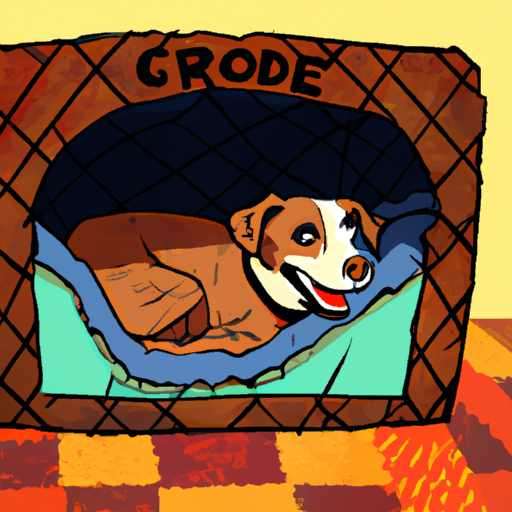The dog crate. A simple, seemingly unremarkable object, yet one that holds significant importance in the world of canine care. It may appear to be just a metal box, but to a dog and its owner, it serves as a sanctuary, a personal space, a training tool, and a temporary constraint. This article aims to delve into the world of dog crates, unraveling their purpose, types, benefits, and tips on how to properly use them.
In the following sections, we will explore:
- What is a dog crate and its purpose
- Different types of dog crates
- The benefits of using a dog crate
- How to properly use a dog crate
- Frequently asked questions about dog crates
Key takeaways:
- Understanding the importance and use of dog crates
- Learning about the different types of dog crates
- Recognizing the benefits of dog crate usage
- Learning how to use a dog crate properly
What is a Dog Crate and its Purpose
A dog crate is essentially a wire, plastic, or fabric enclosure with a door in which a dog can be kept for security or transportation. It’s designed to mimic a dog’s natural den, providing them with a safe and comfortable space of their own.
Dog crates serve multiple purposes, primarily as a training tool for housebreaking and teaching dogs boundaries within the home. They also serve as a safe haven for dogs, a place where they can retreat to when they need time alone or when they are feeling overwhelmed.
According to The Humane Society of the United States, crates can be highly effective in house training dogs as they take advantage of the dog’s natural instincts to keep their ‘den’ clean.
Different Types of Dog Crates
There are several types of dog crates available, each with its own advantages and disadvantages. Here are the most common types:
- Wire Crates: Known for their good ventilation and visibility, these are often foldable for easy transportation.
- Plastic Crates: Generally more enclosed, providing a cozy ‘den’ feeling. Great for travel and often airline-approved.
- Soft-sided Crates: Made from lightweight materials, these crates are portable but not suitable for chewers or puppies.
- Heavy-duty Crates: Designed for strong or aggressive dogs, these crates are extremely robust and often used for travel.
To learn more about the pros and cons of each type, check out this comprehensive guide on OneTopDog.
Benefits of Using a Dog Crate
The use of a dog crate comes with numerous benefits, including:
- Safety: It keeps your dog safe when you can’t supervise them, preventing them from getting into dangerous substances or situations.
- Travel: It provides a secure and familiar space for your dog during journeys.
- Training: It helps with housebreaking, as dogs naturally avoid soiling their sleeping area.
- Personal Space: It provides your dog with their own space where they can relax and feel secure.
How to Properly Use a Dog Crate
While dog crates can be incredibly beneficial, it’s essential to use them properly to ensure your dog’s welfare. Here are some tips:
- Size Matters: Make sure the crate is large enough for your dog to stand, turn around, and lie down comfortably.
- Make It Comfortable: Add a soft bed and favorite toys to make the crate more inviting.
- Don’t Overuse: Crates should not be used as a punishment or for long-term confinement.
- Training: Gradually introduce your dog to the crate using positive reinforcement.
For a more detailed guide on crate training, check out this article on OneTopDog.
Frequently Asked Questions About Dog Crates
-
Is it cruel to crate a dog?
No, when used properly, a crate serves as a private, cozy space for dogs. However, misuse, such as using it for long-term confinement or punishment, can be harmful. -
How long can a dog stay in a crate?
This depends on the dog’s age and training. Puppies under six months should not stay in a crate for more than three to four hours at a time. Adult dogs can stay longer but should not be confined for more than eight hours. -
What should I put in my dog’s crate?
Make it comfortable with a soft bed or blanket. You can also add a few favorite toys or chew items. Avoid leaving water in the crate to prevent spills.
Dog crates, when used correctly, can be a great tool for both dog and owner. They promote safe behavior, aid in training, and provide a cozy retreat for your pet. For more tips on dog care, visit our Dog Care Tips section on OneTopDog.
Remember, every dog is unique, and what works for one might not work for another. Always consider your dog’s comfort and happiness when introducing new elements into their routine.



